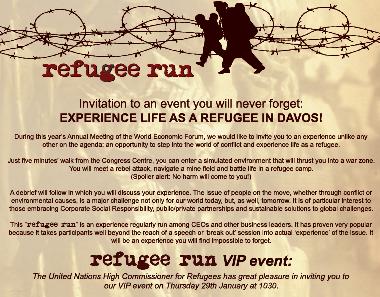Aid Watch Rerun: A suggestion for the 1MillionShirts guy
NOTE FROM THE EDITORS: Over the holidays, we'll be publishing reruns of some of our posts from the first 2 years of Aid Watch. This post originally ran on April 28, 2010, and was one contribution to a controversy that erupted on the internet when aid workers got wind of an amateur aid effort called 1 million shirts. We will be back running new content starting tomorrow, January 4th.
Here’s the back story: A young American entrepreneur wanted to use his powerful social media profiles to do good. He hit on the idea of convincing people to pack up all their unneeded T-shirts, throw in a dollar for shipping, and send them - 1 million of them - somewhere in Africa. He partnered with two charities, applied for 501(c)3 status, and voila, a new cause was born: 1MillionShirts.
Yesterday, professional aid workers, academics, and researchers responded vociferously to this idea. Take a look at these blog posts for more details, but for our purposes we can break it down to two reasons why 1MillionShirts is a poor idea:
- It’s terribly inefficient. One million T-shirts are heavy, and shipping and customs cost a lot, likely more than it would cost to produce those shirts locally. Plus, cheap donated clothes flood local markets, undercutting local textile industries.
- It’s just not needed. There are many serious health, economic, social and political problems challenging different African countries today, but lack of T-shirts isn’t one of them. This project idea, like many bad ones, clearly came from thinking “what kind of help do I want to give” rather than “what kind of help would be most useful to some specific group of individuals.”
So it’s safe to say that Jason, the guy behind 1MillionShirts, is not an expert in giving aid to Africa. But maybe he IS an expert in something.
He is an expert in reaching people through social media. We can conclude this because Jason makes his living from companies that pays him to wear their T-shirts for a day and spread videos, pictures, blog posts and tweets about it to their networks—see iwearyourshirt.com. As one of the testimonials on their website puts it, “They are funny, creative guys who really know how to promote you and your products by wearing your shirt.” Another one: “Gotta love a guy who wears a shirt, gets great exposure for the company whose shirt he’s wearing as well as himself, and who manages to turn it into a business.”
After Jason’s do-gooding was met with such a barrage of criticism, he apparently offered to axe the 1MillionShirts campaign if someone could come up with a better idea.
So here’s our suggestion: Why doesn't he use his own specialized expertise to help get the word out that giving cash is better than giving stuff. I bet if he put his mind to thinking about creative ways to spread that message, he could knock it out of the park.
And if the 1MillionShirts guy doesn't feel that spreading this important message satisfies their desire to do good in the world, he can still follow the advice of many people who devote their professional lives to thinking about problems like these, and donate cash to a trusted charity with local knowledge and experience working to solve some specific problem—just so long as it isn’t African shirtlessness.
--
Update: Alanna Shaikh has written a definitive rebuttal to 1MillionShirts and Jason's reaction to criticism- see it here. Update 2: See also the open letter from Siena Antsis. Update 3: A perspective on the broader meaning of the 1MillionShirts fail from Christopher Fabian of UNICEF's innovation team. Update 4: This blog post has been edited at Jason's request to indicate that only Jason (and not Evan, with whom he works on iwearyourshirt.com) is involved in the 1MillionShirts campaign.
 From Aid to Equality
From Aid to Equality


